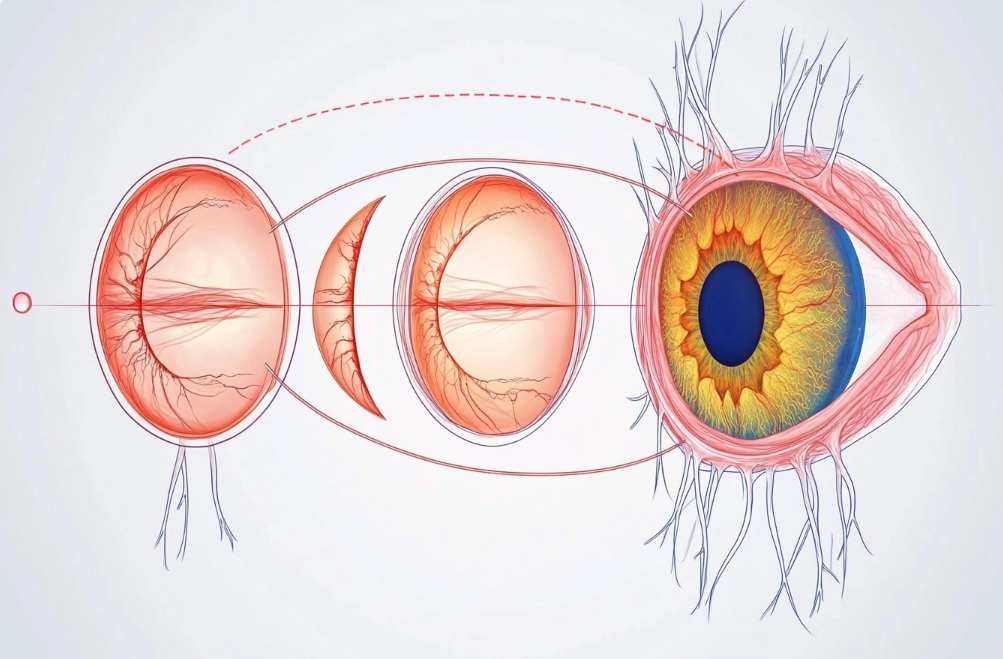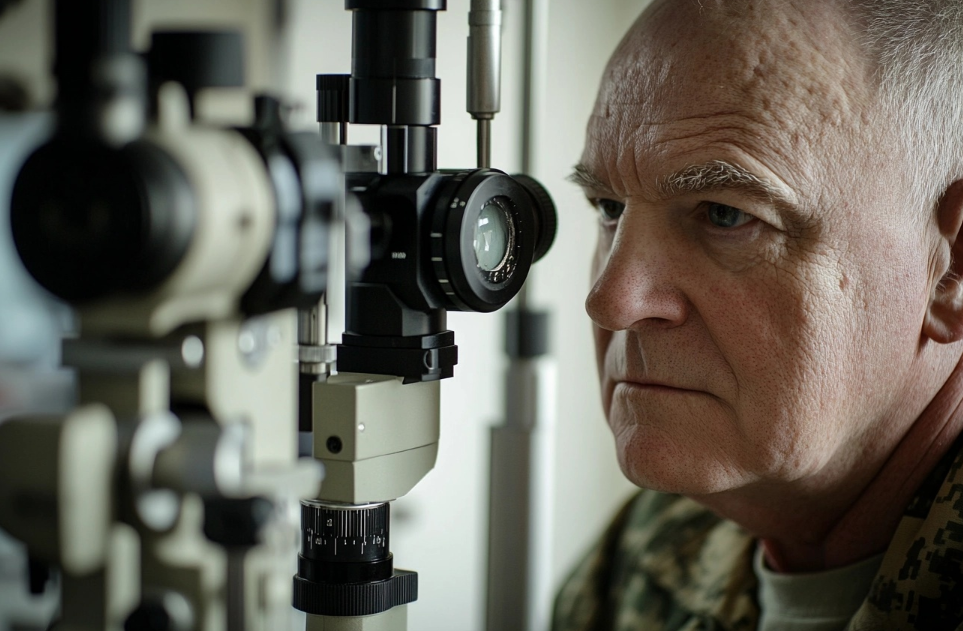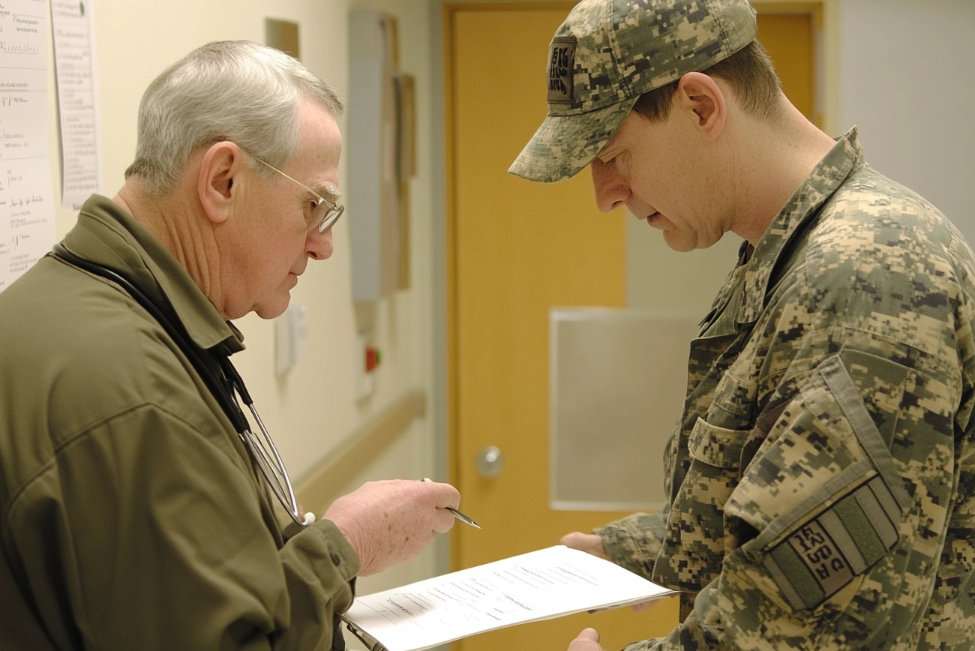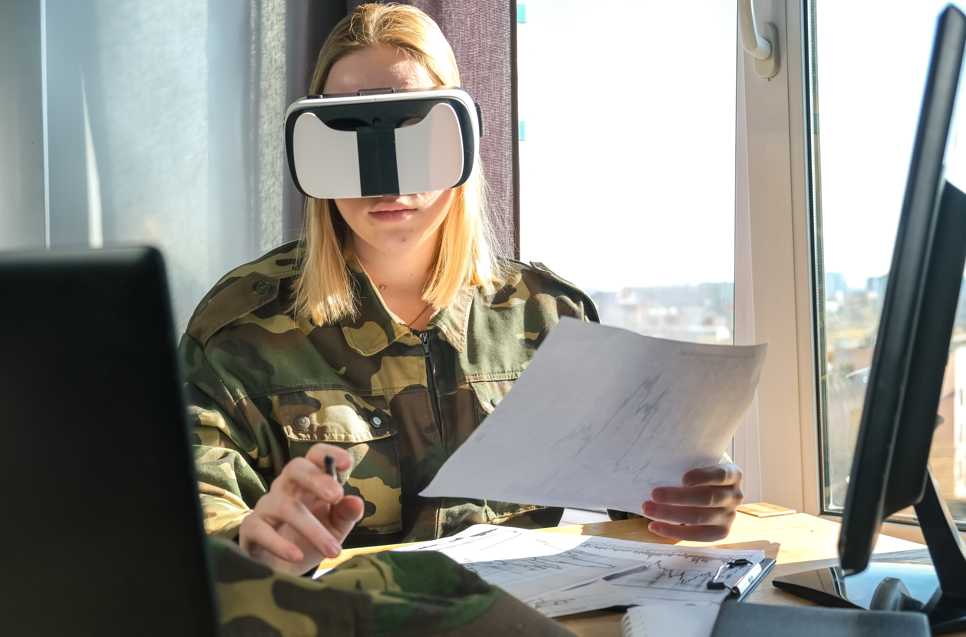Veterans often face unique health challenges, and diabetic retinopathy, a severe eye condition linked to diabetes, is a significant concern for many. It can impact a veteran’s life and ability to work. This guide explains VA claims for diabetic retinopathy, helping veterans get the benefits they deserve.
This guide helps veterans understand their options and pursue them. Whether recently diagnosed or dealing with it for years, this information will guide you.
Diabetic retinopathy affects about 40 percent of people with diabetes. Nearly 25 percent of VA’s patient population has diabetes. This makes related complications, such as diabetic eye disease, a major concern.

High blood sugar damages retinal blood vessels, the light-sensitive tissue at the back of the eye. This damage can cause vision loss and even blindness. Veterans who developed diabetes due to their service need to understand VA claims for diabetic retinopathy.
Understanding Diabetic Retinopathy and Its Connection to Military Service
Before filing VA claims for diabetic retinopathy, understand how it develops and why veterans are at higher risk. Diabetic retinopathy is progressive and develops in stages.

Early-stage nonproliferative diabetic retinopathy may have no symptoms. As it progresses to proliferative diabetic retinopathy, serious vision problems occur.
Here’s a look at the diabetic retinopathy stages:
- Proliferative Retinopathy: New, fragile blood vessels grow in the retina and can leak, blurring vision. If your vision has become blurry, consult a physician as soon as possible.
- Mild Non-Proliferative Retinopathy: Small areas of balloon-like swelling occur in the retina’s tiny blood vessels.
- Moderate Non-Proliferative Retinopathy: Some blood vessels that nourish the retina are blocked. Blood vessels are crucial for eye health.
- Severe Non-Proliferative Retinopathy: More blood vessels are blocked, depriving the retina of blood supply, which is extremely dangerous to your eye.
Several service-related factors increase veterans’ risk for diabetic retinopathy.

- Agent Orange exposure increases the risk of Type 2 diabetes, which can lead to diabetic retinopathy. Agent Orange was a herbicide used in the Vietnam War.
- Combat injuries limiting mobility can lead to weight gain and increased diabetes risk.
- Post-Traumatic Stress Disorder (PTSD) increases the risk of developing diabetes due to stress and lifestyle changes. Veterans can suffer from PTSD because of the restricted diet that they had in service.
- Military diet and lifestyle during service, including high stress and poor food, can contribute to diabetes risk.

Understanding these connections helps establish the service connection required for VA disability benefits for diabetic retinopathy. It is important to establish a service connection to show how military service caused your current medical conditions.
The Process of Filing VA Claims for Diabetic Retinopathy
Here’s a step-by-step guide for filing VA claims for diabetic retinopathy. Filing a claim can get you a compensable disability rating, so you can start receiving the compensation you deserve. Your vision poor night vision faded colors is a disability and could make you eligible to receive disability benefits.
Step 1: Establish a Current Diagnosis
Get a current diagnosis from a qualified healthcare provider. This involves a comprehensive eye exam.
- Visual acuity test.
- Dilated eye exam.
- Optical coherence tomography (OCT).
- Fluorescein angiography.
Keep all medical records related to your diagnosis for your claim. Be sure to note if your vision poor night vision faded, which can qualify you for benefits.
Step 2: Gather Evidence of Service Connection for Diabetic Retinopathy
Establish a service connection between your diabetic retinopathy and your military service. There are various types of service connections.
- Direct Service Connection: Diagnosed with diabetic retinopathy during service.
- Secondary Service Connection: If you have service-connected diabetes, claim diabetic retinopathy as secondary. This is considered a secondary service connection, but you must have a service connected disability already to file this way. This means you must have an already existing, service-connected condition, for diabetic retinopathy to be claimed as secondary. For example, if you were diagnosed with PTSD, then that is a service connected condition.
- Presumptive Service Connection: For Agent Orange-exposed veterans, Type 2 diabetes is presumptive. If you develop diabetic retinopathy, you might be eligible for presumptive service connection. Presumptive service connection only happens under specific circumstances for specific diseases, exposures, and conditions.
Step 3: File Your Claim
File your claim online via VA.gov, by mail, or at a VA regional office. It can take time to receive your rating decision, so be patient. Your rating decision is when they determine how much compensation you are going to get for your disability. Include this documentation:
- Supporting lay statements.
- Diagnosis and medical records.
- Service connection evidence.
Step 4: Attend Your C&P Exam
The VA might schedule a Compensation and Pension (C&P) exam to determine your condition’s severity and service connection. Your examination report must prove the severity and existence of your diabetic retinopathy. A nonproliferative diabetic retinopathy would be less severe than proliferative diabetic retinopathy. Honesty about symptoms and their effect on your daily life is critical.

Step 5: Await the VA’s Decision
The VA reviews your claim and makes a decision, which takes several months.
Understanding VA Disability Ratings for Diabetic Retinopathy
Understanding how the VA rates diabetic retinopathy is important. The VA uses diagnostic code 6040 to assign disability ratings. There are many different diagnostic codes for a variety of medical conditions. They rate it based on incapacitating episodes lasting a specific amount of time in the past 12 months.

| Rating | Criteria |
|---|---|
| 10% | Incapacitating episodes lasting at least 1 week but less than 2 weeks in the past 12 months |
| 20% | Incapacitating episodes lasting at least 2 weeks but less than 4 weeks in the past 12 months |
| 40% | Incapacitating episodes lasting at least 4 weeks but less than 6 weeks in the past 12 months |
| 60% | Incapacitating episodes lasting at least 6 weeks in the past 12 months |
“Incapacitating episodes” are acute symptom periods severe enough for prescribed bed rest and healthcare treatment. Treatment might include following a restricted diet and blood sugar control.
The VA may also consider visual impairment factors:
- Visual acuity.
- Visual field loss.
- Muscle function.
The VA will use the highest overall disability rating.
Special Considerations for Agent Orange Exposure
For veterans who served in Vietnam, Agent Orange exposure matters for VA claims for diabetic retinopathy. Veterans with Type 2 diabetes and Agent Orange exposure may be eligible for presumptive service connection. It would only apply if the veteran developed diabetes after Agent Orange exposure.
Developing diabetic retinopathy as a result of service-connected diabetes lets you file for secondary service connection. Presumptive service connection for diabetes makes service connection easier for your diabetic retinopathy. Diabetes mellitus type ii can result in a variety of serious eye conditions. One type of diabetic eye disease that is common is known as veteran’s diabetic retinopathy.
While Type 2 diabetes is a presumptive condition for Agent Orange, diabetic retinopathy isn’t. Establish the connection between your diabetes and retinopathy.
Challenges in Filing VA Claims for Diabetic Retinopathy
Many veterans face challenges when filing. If you were exposed to burn pit exposure and ended up with diabetic retinopathy, then be sure to get that diagnosed to obtain VA benefits. Here are common problems and solutions:
1. Establishing Service Connection
Establishing a clear service connection is sometimes difficult if diabetes and retinopathy develop years after service. Take these steps:
- Keep detailed medical records. Having well documented eye examinations will be important.
- Gather buddy statements. Your va eye and va eye examination are critical, but what other veterans saw happen to you in person is also strong evidence.
- Get a medical nexus letter from your doctor. If you don’t know where to find this or what a nexus letter is, try searching online for ‘veteran nexus letter example’ and see what the requirements are to get one.
2. Proving the Severity of Your Condition
The VA rating system for diabetic retinopathy is based on incapacitating episodes. This doesn’t fully represent the condition’s daily impact. Take these steps:
- Log your symptoms and how they affect daily activities.
- Attend all medical appointments. The VA might need more information on your condition, so follow through with their appointments. Be honest with your medical care provider about how you feel, what medications you are taking, etc.
- Get statements from family about how your condition affects you. Explain to the doctor what causes incapacitating episodes for you, as this may determine what percent rating they give you.
3. Dealing with Claim Denials
Many VA claims for diabetic retinopathy are initially denied. If this happens, follow these steps:
- Review the denial reason.
- Gather more evidence addressing the denial.
- Seek help from a Veterans Service Organization (VSO) or a VA-accredited attorney.
4. Navigating the Appeals Process
You have the right to appeal a denial. Steps in the appeals process include:
- File a Notice of Disagreement.
- Request a Decision Review Officer (DRO) review. When filing for disability for proliferative diabetic retinopathy or developing diabetic retinopathy, it will require more details on severity than nonproliferative diabetic retinopathy since proliferative diabetic retinopathy is more serious. Proliferative diabetic retinopathy may require more care, doctor visits, and follow-ups.
- If denied again, appeal to the Board of Veterans’ Appeals.
Persistence is key with VA claims for diabetic retinopathy.
The Importance of Regular Eye Exams for Veterans
Prevention and early detection are as important as understanding VA claims for diabetic retinopathy. Regular eye exams are essential to managing it. If you have connected diabetes to your time in the military and therefore have a claim for service connected diabetes, then any issues related to that like your vision and other diabetic symptoms, you should try to obtain evidence of. In some cases, service-connected diabetes can be rated as low as 0% and that’s OK.

People with diabetes should have a comprehensive dilated eye exam at least once a year.
Here’s why regular eye exams matter:
- Early Detection: Diabetic retinopathy often has no early symptoms. Exams can detect it before it causes vision problems.
- Monitoring Progression: Regular exams let doctors monitor existing retinopathy and adjust treatment. Proper treatment from eye care professionals is key to preventing vision problems down the line. Even with good eye exams, a restricted diet, and frequent testing, it is still a possibility to develop a veteran’s diabetic retinopathy, if diabetes worsens or develops after exposure. Be sure to file for benefits immediately when you are diagnosed, to begin receiving compensation for any diabetic retinopathy that worsens.
- Preventing Vision Loss: Early treatment reduces the risk of severe vision loss. Early treatment by a licensed professional can prevent or prolong serious eye issues.
- Documenting for VA Claims: Exams create a paper trail for filing or appealing VA claims. When the VA Board finds evidence for veteran’s diabetic retinopathy, then they can justify giving you the proper compensation and disability rating.
The VA provides comprehensive eye care. Take advantage of these crucial services for your health and for supporting future VA claims. They offer va eye exams which may involve an external or internal examination.
Additional Resources for Veterans with Diabetic Retinopathy
Here are some additional resources that can provide support:
- VA Vision Care Services: Information on eligibility and application.
- American Diabetes Association – Eye Complications: Information on diabetic eye disease.
- Foundation Fighting Blindness – Diabetic Retinopathy: Detailed information, research, and clinical trials. Learn more about specific symptoms like poor night vision, vision faded colors, poor night vision faded colors, and vision poor night vision faded. Even issues with diabetes mellitus type ii such as faded colors can have a significant impact on the disability rating that is given.
- Attain Med Group: Support for gathering medical evidence. This company also specializes in independent psychological exams, which may be necessary when filing for veteran PTSD disability.
- Independent Psychological Exams: Information on psychological exams. They are crucial for VA claims, especially if you have PTSD. Your PTSD or type ii diabetes may not be fully debilitating, so it is important to have proper documentation and frequent examinations by medical professionals.
Conclusion
VA claims for diabetic retinopathy are a complex, important process for veterans with this eye condition. There’s a lot to consider, from the service connection to gathering evidence and navigating the process.
Thorough documentation, regular medical care, and persistence are key. Don’t be discouraged by initial claim denials.
Prioritize your eye health with regular eye exams and diabetes management. This not only helps with your VA claim, but preserves vision and quality of life. Ensure you receive the deserved care and benefits.


